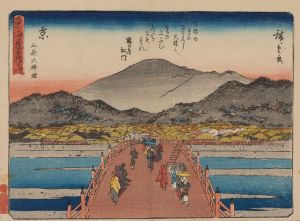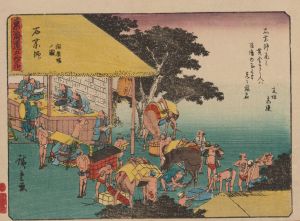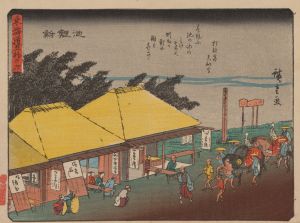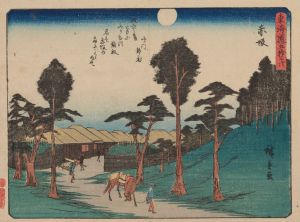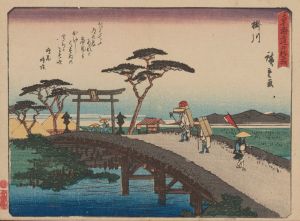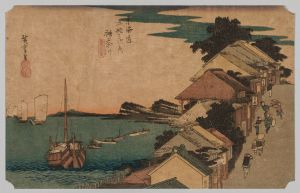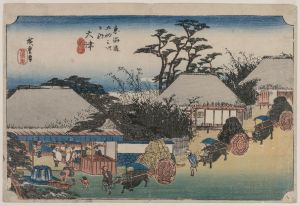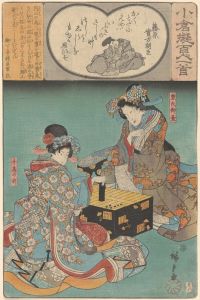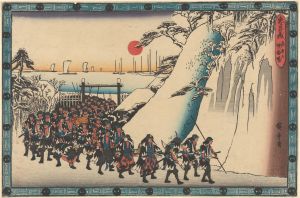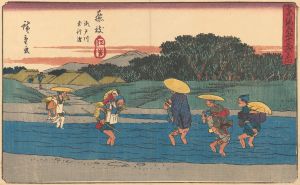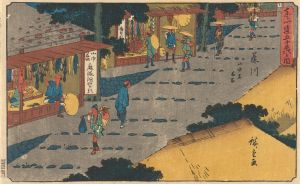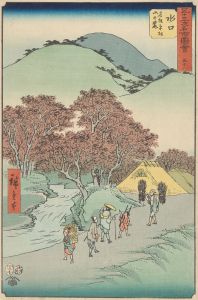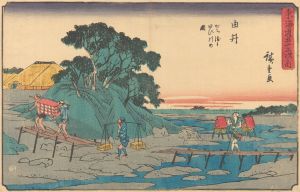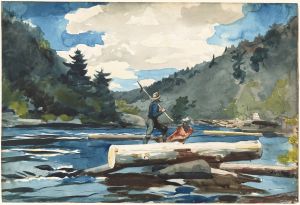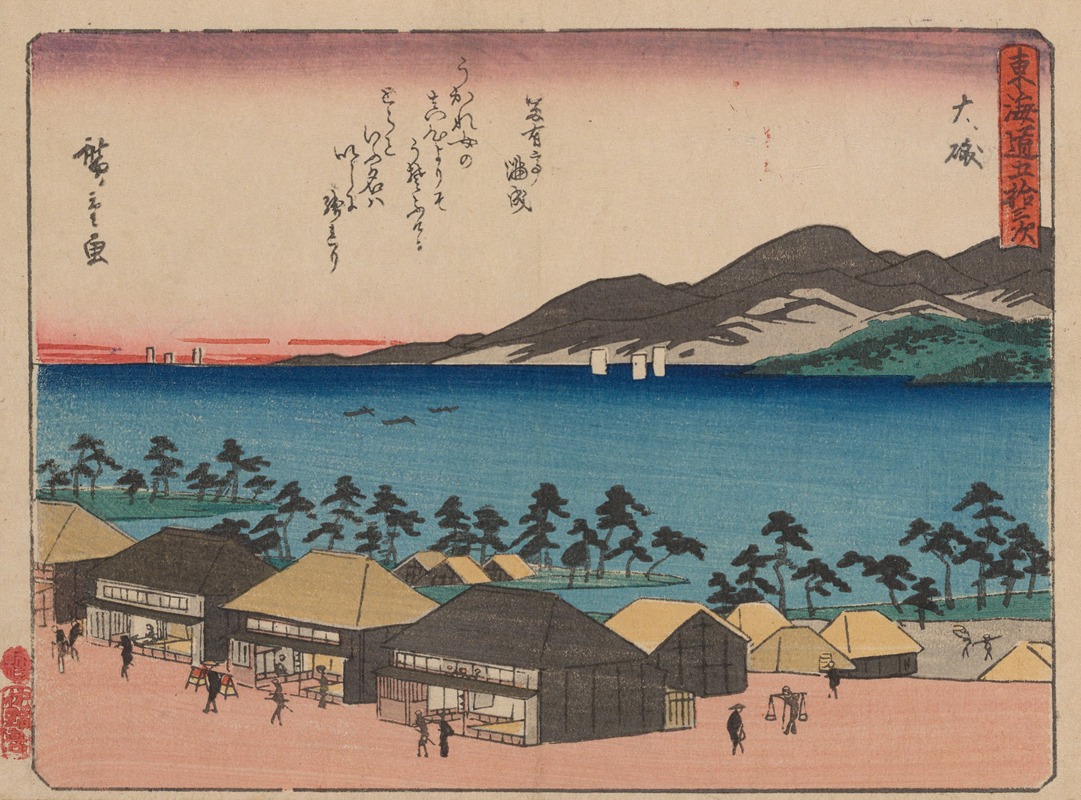
Tokaido gojusantsugi, Pl.09
A hand-painted replica of Andō Hiroshige’s masterpiece Tokaido gojusantsugi, Pl.09, meticulously crafted by professional artists to capture the true essence of the original. Each piece is created with museum-quality canvas and rare mineral pigments, carefully painted by experienced artists with delicate brushstrokes and rich, layered colors to perfectly recreate the texture of the original artwork. Unlike machine-printed reproductions, this hand-painted version brings the painting to life, infused with the artist’s emotions and skill in every stroke. Whether for personal collection or home decoration, it instantly elevates the artistic atmosphere of any space.
Andō Hiroshige, a renowned Japanese ukiyo-e artist of the Edo period, is celebrated for his landscape prints and depictions of everyday life. One of his most famous series is "The Fifty-three Stations of the Tōkaidō" (Tōkaidō Gojūsan-tsugi), which illustrates the scenic journey along the Tōkaidō road, the main route connecting Edo (modern-day Tokyo) to Kyoto. This series, created in the early 1830s, consists of 55 prints, including the starting point at Nihonbashi in Edo and the terminus at Kyoto, along with the 53 stations in between.
Plate 09 of this series, known as "Tokaido gojusantsugi, Pl.09," depicts the station of Odawara. Odawara was an important post town located near the Hakone Pass, a challenging section of the Tōkaidō road due to its steep terrain. Hiroshige's portrayal of Odawara captures the essence of travel during the Edo period, highlighting both the natural beauty and the bustling activity of the station.
In this print, Hiroshige employs his characteristic use of perspective and color to convey depth and atmosphere. The composition typically features travelers and locals engaged in various activities, set against a backdrop of the natural landscape. The scene might include elements such as the Sagami Bay, the distant Hakone mountains, or the iconic Odawara Castle, which was a significant landmark of the area. Hiroshige's attention to detail and ability to capture the transient moments of daily life contribute to the enduring appeal of his work.
Hiroshige's Tōkaidō series was highly popular during his lifetime and remains influential in the art world. It not only provides a visual record of the Tōkaidō road and its stations but also reflects the cultural and social dynamics of the Edo period. The series is noted for its innovative use of perspective, which was influenced by Western art techniques, and its vivid color palette, achieved through the use of woodblock printing.
The success of "The Fifty-three Stations of the Tōkaidō" established Hiroshige as a master of the ukiyo-e genre and inspired numerous artists both in Japan and abroad. His work had a significant impact on Western artists in the 19th century, particularly the Impressionists, who admired his compositions and use of color.
Hiroshige's ability to evoke a sense of place and moment through his prints has made "The Fifty-three Stations of the Tōkaidō" a timeless masterpiece. Plate 09, like the other prints in the series, offers a glimpse into the historical and cultural landscape of Japan during the Edo period, capturing the spirit of travel and exploration that characterized the era.





